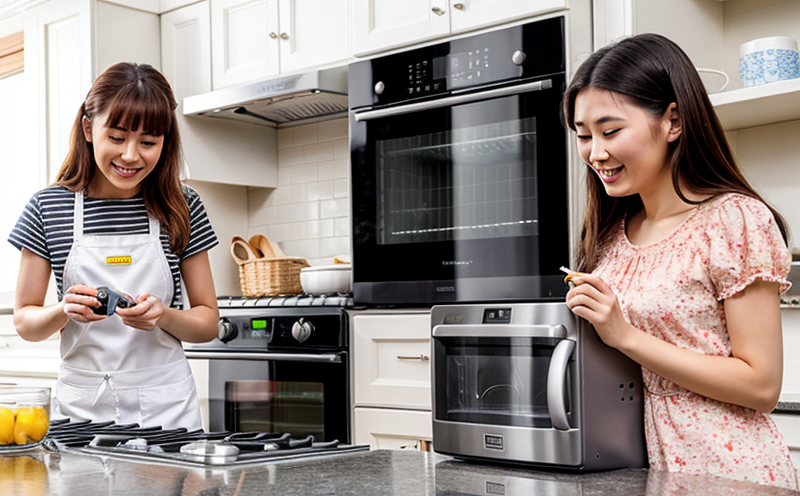ISO 5151 Performance Testing for Non Ducted Air Conditioners
The ISO 5151 standard is specifically designed to test and evaluate the performance of non-ducted air conditioners. This service ensures that these devices meet the stringent requirements set forth by international standards, providing assurance of reliability, safety, and efficiency.
Non-ducted air conditioners are widely used in residential settings where direct ducting into a central HVAC system is not feasible or practical. These units can be found in various configurations such as floor-standing models, portable systems, and window units. The ISO 5151 standard addresses the unique performance metrics that these devices must meet to ensure they function optimally under real-world conditions.
The testing process begins with a thorough understanding of the device's specifications and intended use. This includes detailed information on input voltage, power consumption, cooling capacity, noise levels, and energy efficiency ratings. Compliance officers and quality managers rely on this service to validate that their products meet the strictest international standards.
The test parameters are carefully selected to reflect actual usage scenarios. For instance, the performance is evaluated under various ambient temperature conditions to ensure consistent operation across different climates. Noise level testing ensures that the units do not exceed acceptable thresholds, which can impact user comfort and satisfaction. Energy efficiency tests provide insights into the device's ability to operate effectively while minimizing electricity consumption.
Preparation of the specimen involves setting up the air conditioner in a controlled environment that simulates real-world operating conditions. This includes configuring the unit to its intended settings for temperature control, fan speed, and other relevant parameters. The testing apparatus used adheres strictly to ISO 5151 specifications, ensuring accurate and reliable results.
The instrumentation employed during these tests is state-of-the-art, designed to measure key performance indicators with precision. This includes thermal imaging cameras to assess heat distribution, sound level meters for noise measurement, and power analyzers for electrical parameters. The data collected from these instruments is rigorously analyzed using statistical methods to determine compliance with ISO 5151.
The final report presents detailed findings on the device's performance metrics. It includes comparisons against international standards, highlighting any areas where improvements are needed. Compliance officers and quality managers use this information to guide further development efforts and ensure continuous improvement in product design.
By adhering to ISO 5151, manufacturers can demonstrate their commitment to producing high-quality, reliable non-ducted air conditioners that meet global standards of excellence. This not only enhances brand reputation but also opens up opportunities for international markets where stringent regulatory requirements are in place.
Scope and Methodology
The scope of ISO 5151 performance testing encompasses a comprehensive evaluation of non-ducted air conditioners' operational characteristics. This includes assessing their cooling capacity, energy efficiency, noise levels, and overall reliability under specified conditions.
- Cooling Capacity: The test measures the amount of heat that can be removed from a controlled environment within a given time frame. This is determined by placing the unit in a standardized chamber and recording the temperature decrease over a set period.
- Energy Efficiency: The efficiency ratio is calculated based on the input power versus the cooling output, ensuring minimal energy consumption for maximum performance.
- Noise Levels: Sound level meters are used to measure the noise generated by the unit during operation. This helps in maintaining comfort levels and meeting regulatory noise standards.
- Reliability: Continuous testing over extended periods simulates long-term use, providing insights into the device's durability and maintenance requirements.
The methodology involves setting up the air conditioner in a controlled environment that closely mimics real-world conditions. This includes varying ambient temperatures to test the unit under different operational scenarios. The data collected is analyzed using statistical methods to ensure accuracy and consistency.
International Acceptance and Recognition
- The ISO 5151 standard has gained widespread acceptance in countries with stringent regulatory requirements for household electrical appliances.
- It is widely recognized by global standards bodies, ensuring that manufacturers adhere to consistent performance criteria across borders.
Countries such as the United States, Canada, and various European nations have adopted ISO 5151 as part of their national regulations. This ensures that non-ducted air conditioners meet the highest safety and performance standards before being sold or distributed in these markets.
The standard's international recognition enhances market access for manufacturers who comply with its stringent requirements. By adhering to this standard, companies can ensure their products are accepted by regulatory authorities worldwide, thereby reducing compliance risks and facilitating smoother import/export processes.
Competitive Advantage and Market Impact
- Achieving ISO 5151 certification provides a significant competitive advantage in the marketplace. It assures consumers of the product's reliability and efficiency, fostering brand loyalty and repeat business.
- The standard sets a benchmark for quality, enabling manufacturers to differentiate their products from competitors who may not meet such rigorous criteria.
Compliance with ISO 5151 can lead to increased market share by attracting more discerning customers. Retailers also prefer suppliers that adhere to global standards, further enhancing the manufacturer's position in the industry.
The standard's emphasis on energy efficiency is particularly beneficial in today’s environmentally conscious market. By demonstrating a commitment to sustainability, manufacturers can tap into growing demand for eco-friendly products without compromising performance.





